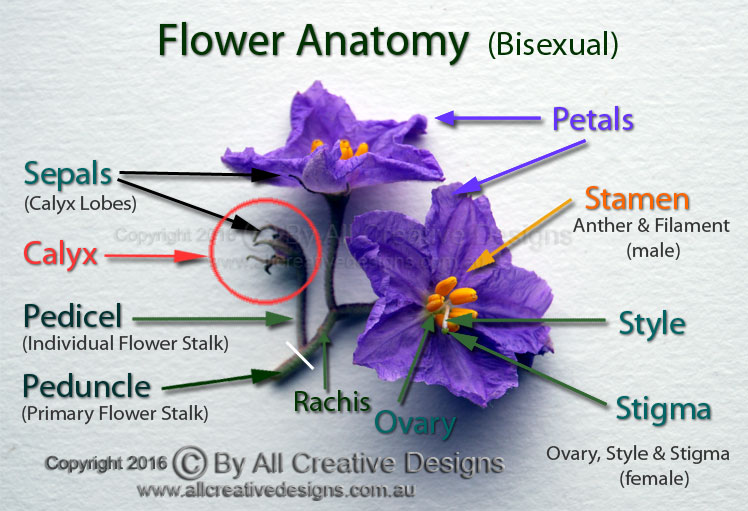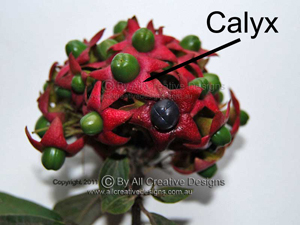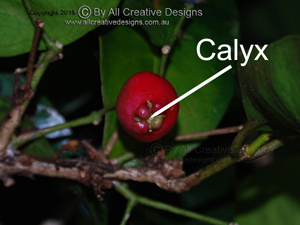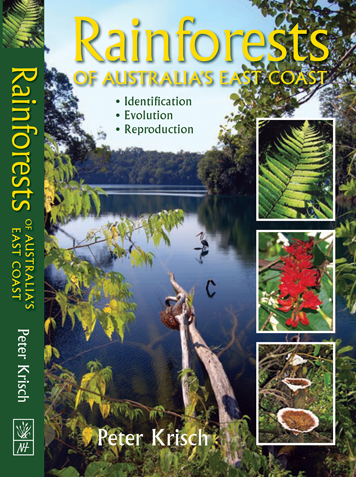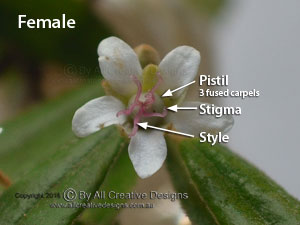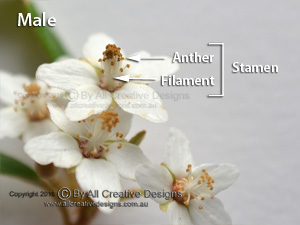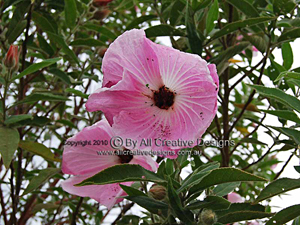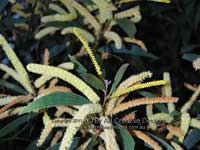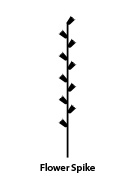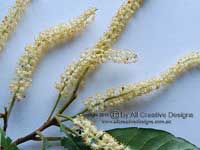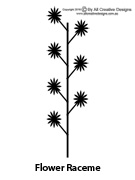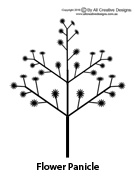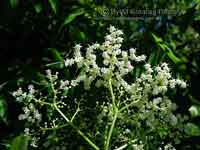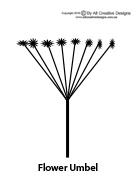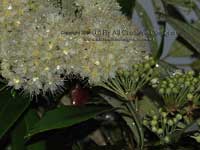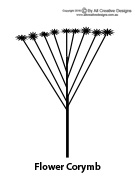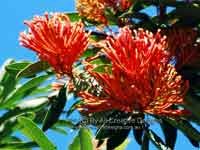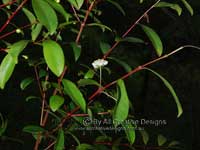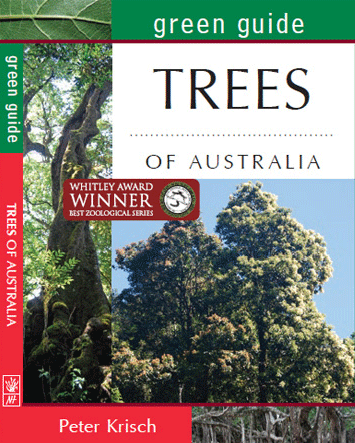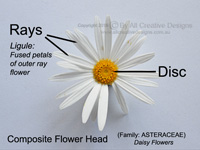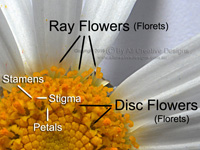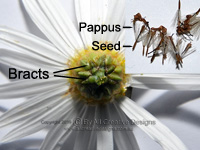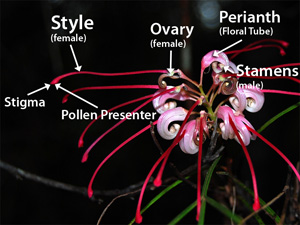
< Expand the Menu to access our Tree Identification Pages
Using Flowers Characteristics in the Identification of Australian Tree Species
Introduction: Flowers are essential in the classification of native Australian trees and shrubs, but are normally not the primary method (with exceptions), when identifying native species in their natural environment. Reasons for this are; the often short term life span of flowers, being out of reach for closer inspection (i.e. flowers are held in the higher canopy) and often being rather inconspicuous. Although species may not flower every year or only commence flowering as adult trees. An advantage of using flowers in classification is that species of the same genus will bear a very similar inflorescence. Using detailed illustrations, pictures and a comprehensive language the anatomy and arrangement of flowers (botanical; inflorescence) is explained on our web page below. (Updated February 2024)
We hope to raise the awareness to the high conservation value of remaining old growth forests in Australia. 'Trees might be a renewable resource, old growth forests are not'.
Descriptions, photos and illustrations copyright ©2024 by www.allcreativedesigns.com.au world wide rights reserved.
Click or Tap Images for Full Size View
Flower Anatomy, Parts of a Flower
Bisexual flowers contain fertile male and female reproductive organs and are also referred to as perfect or hermaphrodite flowers.
The botanical term of perianth refers to the calyx (sepals) and the corolla (petals) as a unit, especially when there are no petals or sepals present, i.e. when the calyx can't be distinguished from the corolla. The term floral tube translates to perianth.
Stamen: Stamens are the male reproductive parts of a flower. A stamen is made up of the anther (swollen sac producing male pollen) and the filament (the stalk supporting the anther).
Stigma: The stigma receives the male pollen.
Style: The style is a hollow tube supporting the stigma and connecting to the ovary.
Ovary: The ovary contains one or multiple ovules (egg-cells), which after pollination produces the seed(s).
Carpel: The female reproductive organ, consisting of a stigma, style and an ovary. A superior ovary is attached above other floral components, such as petals and calyx (sepals). An inferior ovary is situated below other floral parts. A unit of fused carpels is known as a pistil.
Petals: Petals are modified leaves that are part of a flower. All petals as a unit are called a corolla, especially when they are fused (forming a corolla tube). The number of petals can vary from none to numerous. Petals have no reproductive functions, but might attract pollinators such as specific insects and birds by visual means of colour and shape. Petals can have the ability to emit scent by producing Biogenic Volatile Organic Compounds (BVOCs), compounds that vaporise at low temperatures. Scent can attract pollinators, deter herbivores and plays a role in plant to plant communications. Leaves are another source of BVOCs
Sepals: Appendages forming the base of a flower, which can be totally separated (free) or fused together with or without protrusions (lobes) towards the apex. The shape of sepals can vary from leaf-like structures resembling petals to tentacle shaped extensions, as for the Tall Nightshade Solanum nobile (shown above).
Receptacle: The uppermost part of the the flower stalk to which floral components are usually attached to.
Peduncle: The primary flower stalk supporting the rachis to which individual stalks (pedicels) are attached to, or the stalk of a single (solitary) flower.
Pedicel: An individual flower stalk in a compound flower arrangement (Inflorescence).
Click or Tap Images for Full Size View (opens new browser window)
Rainforests of Australia's East Coast, HAND SIGNED BOOKS; (Out of Stock) A practical and informative field guide to the identification of native rainforest species. More than 800 colour photographs, informative graphics, maps and detailed description of more than 300 species.
This book is a valuable information source for bushwalkers, students, gardeners and anyone with an interest in Australia’s native flora.
The book was written and illustrated by the author of the tree identification web pages.
New Holland Publishers: May 2019
ISBN: 9781925546293
Format: Paperback with PVC
Pages: 304 pp.
Size: 23 cm high x 15 cm wide
Full Colour Photography
Rainforests: Identification - Evolution - Reproduction
Dedicated photography of rainforest species including; mosses, mushrooms, lichens, slime moulds, ferns, conifers, flowering trees, climbing plants, orchids and palms enable the reader to identify commonly encountered species.
CLICK HERE FOR MORE INFORMATION
Unisex Flowers
Compared to a bisexual flower (shown above) unisex flowers either feature only male reproductive organs, which are stamens consisting of filaments and anthers (picture on right) or only female reproductive organs, carpels made up of an ovary, style and stigma (left). Click images for an enlarged view. The image of the female flower shows a pistil consisting of 3 fused carpels, each with its own split style, stigmas and ovary. The fruit produced by the female flower is a capsule with 3 valves (segments), each producing a single seed.
The images show flowers of the Brush Wedding Bush (Ricinocarpos speciosus), that is monoecious, meaning that flowers of both different sexes are borne on the same plant. Whereas species that produce either male or female flowers on different plants are referred to as being dioecious. Some unisex flowers may feature male and female reproductive organs, but in this case either male or female parts are infertile.
Flowering Times and Periods
Main reasons effecting flowering times of native Australian tree species are average temperatures and other environmental conditions, such as amount of sunlight and rainfall received. On the east coast of Australia average temperatures depend on latitude, altitude and proximity to the coastline. For instance, the Native Gardenia Atractocarpus benthamianus will flower in July to August at low altitude in warm location, whereas at an altitude of 900m flowers appear in October to November. Flowering periods can be very short, only lasting for few weeks, or extend to more than 6 month, as is the case with our native hibiscus species, making their distinctive flowers an obvious and practical identification feature in the field. (The native Pink Hibiscus Hibiscus splendens is shown to the right).
Click or Tap Image for Full Size View
Flower Arrangements, Types of Inflorescence
A Flower Spike:
Flowers are attached without individual stalks (pedicels) to a single central axis (rachis), which is supported by the peduncle at the base.
The image to the right shows the flowering spike of the Maiden's Wattle Acacia maidenii.
Click or Tap Image for Full Size View
A Flower Raceme:
Each flower is attached by its own stalk (pedicel) to a single central axis (rachis), which is supported by the peduncle at the base.
The flower raceme of the Grey Possumwood Quintinia verdonii is shown to the right.
Click or Tap Image for Full Size View
A Flower Panicle:
Individual flowers are held on a multi-branching structure, supported by a common stalk (peduncle). Panicles can be loosely shaped or form more umbrella shaped clusters as shown in the picture of the White Elderberry Sambucus gaudichaudiana to the right.
Click or Tap Image for Full Size View
A Flower Umbel:
Individual flower stalks (pedicels) are attached to the same point on top of a common stalk (peduncle).
The Lemon Myrtle Backhousia citriodora features this type of inflorescence, another good example is the inflorescence of Fire Wheel Tree
Stenocarpus sinuatus (see page 5).
Click or Tap Image for Full Size View
A Flower Corymb:
A type of inflorescence where individual flower stalks branch off the rachis at different levels, but flowers are held at a roughly even height.
Species belonging to the genus Alloxylon, Waratahs, feature this flower arrangement. The Tree Waratah Alloxylon flammeum is shown to the right.
Click or Tap Image for Full Size View
Flowers of Australian shrubs and tree species can appear in terminal positions, i.e. at the very end of young branches, in leaf axils along young growth, along older leafless branches (ramiflorous) and on tree trunks (cauliflorous). Many tree and shrub species can feature a combination of locations in which flowers appear. The picture to the right is showing a solitary flower (a simple inflorescence) appearing in the leaf axils of the Plum Myrtle Pilidiostigma glabrum.
Click or Tap Image for Full Size View
green guide TREES OF AUSTRALIA
How to recognise Australian tree families and genera.
A practical field guide to the identification of native species. More than 200 full colour photographs and detailed descriptions explaining leaf, bark, flower, fruit and other tree characteristics. The guide was written and illustrated by the author of these web pages.
New Holland Publishers: January 2016
Format: Paperback with PVC
Pages: 128 pp.
Size: 13 cm wide x 18 cm high
First Edition, Hand Signed Copies
CLICK HERE FOR MORE INFORMATION Composite Inflorescence (Flower Heads)
Typically, a composite inflorescence or flower head of the Daisy or Aster family (Asteraceae) consists of multiple individual flowers of two types.
Flowers situated around the perimeter of the disc are called ray flowers (or ray florets). Each of these individual ray flowers features a large single fused petal (white for this species), called a ligule, on their outer edge with stamens and stigmas present in their centre.
The second type are the densely packed disc flowers (yellow/orange for this species), which consist of floral tubes that separate into pointed lobes (petals) at the apex, and include stamens and stigmas in the centre.
Each ray or disc floret is capable of producing fruit, a seed attached to fine silky filaments (pappus), enabling the seed to become airborne. Characteristically, the shared base is formed by rows of bracts.
Click or Tap Image for Full Size View
The Daisy or Aster family (Asteraceae) is the most diverse plant family in the world. Many are soft (herbaceous) annual flowers, whereas others are woody perennial shrubs. The Musk Daisy Bush (Olearia argophylla) is an exception by reaching the height of a small to medium sized tree (15m).
The genus Olearia (Daisy Bushes) produces flowers that are typical for the family and contains more than 100 species in Australia, with habitats ranging from semi-arid regions to rainforests. Species of the genus Ozothamnus (Family: Asteraceae), such as the 'Dogwoods' and 'Tree Everlasting', are common shrubs with extensive distribution ranges throughout Australia.
Grevillea Flowers with Pollen Presenters
Pollen presenters are a characteristic for species of the genus Grevillea and also a feature for species belonging to the genus Banksia. Both genera are part of the protea family (PROTEACEAE).
The conspicuous styles of this Grevillea species are orange/red coloured and enable male pollen to reach the ovary at the base. The greenish ovary is visible at the base of the style and supported by a stipe (stalk). Styles are crowned by a specific floral structure called a pollen presenter that collects pollen from the stamens (male) situated on the inside of the perianth (floral tube). This process happens before the floral tube splits to expose the elongating style. The stigma (female) opens after the pollen has been dispersed, thus avoiding self-pollination.
Click or tap image for full size view.
